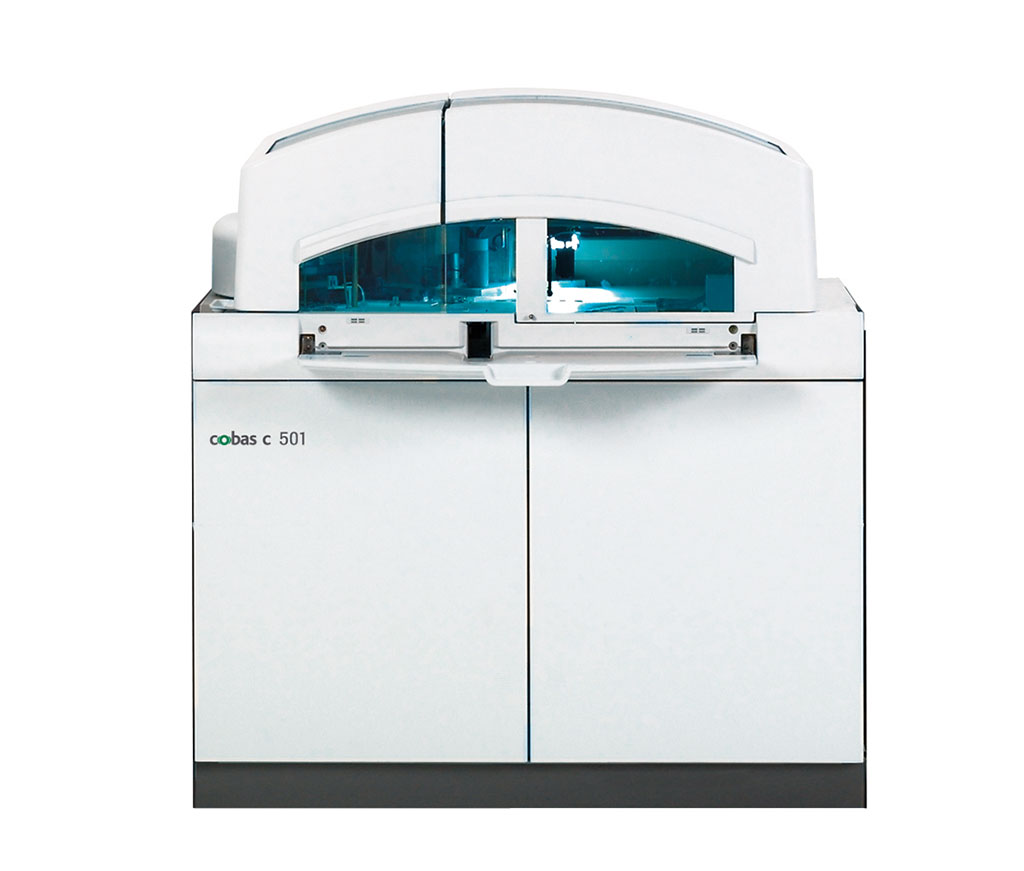High-Sensitivity C-Reactive Protein Investigated in Acute Myocardial Infarction Patients
By LabMedica International staff writers
Posted on 12 Nov 2020
Type 2 diabetes mellitus (DM) is a common comorbidity in acute myocardial infarction (AMI), and it is associated with two-fold higher in-hospital and long-term mortality rates and with a higher risk of recurrent cardiovascular events.Posted on 12 Nov 2020
C-reactive protein (CRP), an acute phase protein secreted by the liver, is the most widely used biomarker for detecting inflammatory conditions. To assess cardiovascular risk, physicians have now adopted high-sensitivity CRP (hs-CRP), instead of standard CRP assays that monitor infections and other inflammatory conditions.

Image: The cobas c 501 module for clinical chemistry (Photo courtesy of Roche Diagnostics).
Cardiologists at the Monzino Cardiological Center Institute (Milan, Italy) carried out a prospective, observational study and enrolled 2,178 patients with AMI between June 1, 2012 and October 1, 2017. Patients were considered as suffering from DM if one of the following conditions were present: personal history of DM reported in clinical record, treatment with glucose lowering drugs, or a glycated hemoglobin value ≥ 6.5% (48 mmol/mol). High-sensitivity-CRP was measured at hospital admission by Cobas assay (particle-enhanced immunoturbidimetric assay) on Cobas c501 (Roche Diagnostics, Risch-Rotkreuz, Switzerland). A hs-CRP value ≥ 2 mg/L was considered a sign of inflammation.
The scientists reported that 548 (26%) patients had DM and they had higher hs-CRP levels than non-DM patients (5.32 versus 3.24 mg/L)). The primary endpoint incidence in the overall population (7%, 9%, 13%, 22%), in DM (14%, 9%, 21%, 27%), and non-DM (5%, 8%, 10%, 19%) patients increased in parallel with hs-CRP quartiles. The adjusted risk of the primary endpoint increased in parallel with hs-CRP quartiles in DM and non-DM patients, but this relationship was less evident in DM patients.
In the overall population, the adjusted odds ratio (OR) of the primary endpoint associated with an hs-CRP value ≥ 2 mg/L was 2.10. For the same risk, hs-CRP was 7 mg/L and 2 mg/L in patients with and without DM. A similar behavior was observed for the secondary endpoint when the hazard ratio (HR) associated with an hs-CRP value ≥ 2 mg/L found in the overall population was 2.25. For the same risk, hs-CRP was 8 mg/L and 1.5 mg/L in DM and non-DM patients.
The authors concluded that hs-CRP predicts in-hospital outcome and two-year mortality in AMI patients with and without DM. However, in DM patients, the same risk of developing events as in non-DM patients is associated to higher hs-CRP levels. The study was published on October 20, 2020 in the journal Cardiovascular Diabetology.













